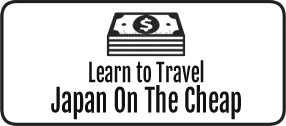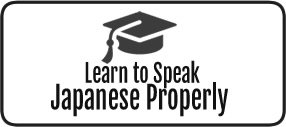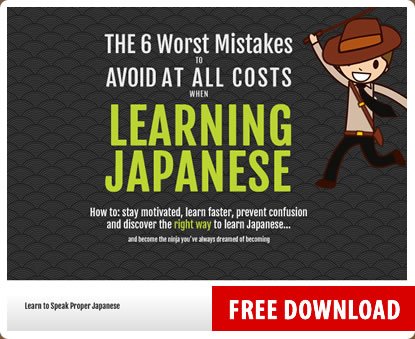Street Food
For some when they hear the word ‘street food’ images of dirty, tainted fare are conjured. This may be the case in some developing countries but certainly not in Japan!
Don’t let the fact that this food is prepared in stalls or hole-in-the-wall restaurants turn you away from partaking, for in street you will find arguably the most delicious and authentic Japanese cooking.
Takoyaki
 A staple in the Kansai region of Japan, you can still find these delectable fried octopus balls in Tokyo as well. About the size of a golf ball, they are cooked in batches of 6 or 12 and served drizzled in savory sauces. (similar to okonomiyaki)
A staple in the Kansai region of Japan, you can still find these delectable fried octopus balls in Tokyo as well. About the size of a golf ball, they are cooked in batches of 6 or 12 and served drizzled in savory sauces. (similar to okonomiyaki)
Prospective eaters will be pleased to know that the octopus in fact doesn’t taste like anything, so even those who don’t eat sea food will be able to manage, if they can get over the thought of stomaching octopus.
Best Takoyaki in Tokyo
Tsukiji Gindako Haiball Sakaba, Shinjuku Kabukicho branch
Address: 1-18-6 Kabukicho, Shinjuku, Tokyo
Telephone: (03)5155 2227
Open: Mon-Fri 12noon–5am, Sat-Sun & nat. holidays 11am–5am
Google Map
The Gindaco
Address: Dai5 Suwa Bldg. 1F/2F, 1-14-24 Jingumae, Shibuya, Tokyo
Telephone: (03)5775 1788
Open: 11am–10pm
Website: www.hotland.co.jp/english/
Google Map
Korokke (Croquettes)
 The Japanese have a great enthusiasm for importing French culture and then adding their own twist to make it theirs. The Korokke is a fine example of this (Or Croquette).
The Japanese have a great enthusiasm for importing French culture and then adding their own twist to make it theirs. The Korokke is a fine example of this (Or Croquette).
Mashed potatoes and tidbits of pork are coated in a crunchy corn-based skin and then deep fried. The result is a tasty patty you can take with you on the go.
Varieties include beef, shrimp, chicken etc etc.
Being deep-fried it should be noted that they are in fact rather greasy (the skin soaking up much oil) so don’t be surprised if you get a headache after eating a few.
Best Korokke in Tokyo
Maruya Nikuten
東京都文京区本郷4-36-4
03-3812-0654
Google Map
Okonomiyaki
 Much more than just an omelet, the Okonomiyaki is rather elaborate, depending on what restaurant or region of Japan you go to; it can have all manner of variations.
Much more than just an omelet, the Okonomiyaki is rather elaborate, depending on what restaurant or region of Japan you go to; it can have all manner of variations.
Whereas this dish is most famous in the Kansai region of Japan (Osaka and Kyoto) with a little luck you can find some decent Okonomiyaki in Tokyo.
The omelet is cooked on a griddle and then drizzled with Japanese Mayo & a sweet worcestershire-ish type sauce, then it is topped with nearly a dozen different meats, veggies and spices.
Best Okonomiyaki in Tokyo
Kiji
Tokyo Bldg. TOKIA B1F, 2-7-3 Marunouchi, Chiyoda-ku, Tokyo
03-3216-3123
http://www.o-kizi.jp
Google Map
Gyoza
 More commonly known as ‘pot stickers’ in the US, Goyza are steamed or deep fried dumplings with pork filling. They are typically bought in groups of six or a dozen and are dipped in soy sauce.
More commonly known as ‘pot stickers’ in the US, Goyza are steamed or deep fried dumplings with pork filling. They are typically bought in groups of six or a dozen and are dipped in soy sauce.
A container of six gyoza in Tokyo will cost around $300.
Best Gyoza in Tokyo
Suito Pozu
1-13-2 Kanda-jimbocho, Chiyoda, Tokyo
03 3295 4084
Google Map
Yakitori
 Similar to Kebabs, Yakitori is simply a stick with bits of grilled chicken, glazed in a rich sauce, or served plain.
Similar to Kebabs, Yakitori is simply a stick with bits of grilled chicken, glazed in a rich sauce, or served plain.
Yaitori can be found readily at any of Tokyo’s traditional markets, such as: Sugamo, Yanaka, and possibly Ameya yokocho.
Best Yakitori in Tokyo
Bird Land Ginza
B1, Tsukamoto Sozan Bldg, 4-2-15 Ginza, Chuo-ku
03 5250 1081
ginza-birdland.sakura.ne.jp
Google Map
Ramen
 A staple for American college kids as well as the Japanese themselves, instant ramen has been exported successfully all over the world, providing consumers with cheap, filling and somewhat delicious eating.
A staple for American college kids as well as the Japanese themselves, instant ramen has been exported successfully all over the world, providing consumers with cheap, filling and somewhat delicious eating.
However real ramen in Tokyo bears no resemblance to the Top Ramen you may have had in American food stores. None at all.
A real bowl of ramen in Tokyo is quite often rather large, almost enough for a whole meal. It includes slices of pork, boiled egg, seaweed, onions, other greens and spices.
Your average bowl of ramen will cost apprx $700 yen at the lowest and $1000 at the highest. Of course you can go to the Hyaku Yen and score a bowl of instant ramen for $100 yen but there really is no substitute.
Best Ramen in Tokyo
Hakata Shouten
2-14-6 Hitotsuya, Adachi-ku, Tokyo
Google Map
Miso
 A standard Japanese soup, with a fermented bean-based broth. Miso sets the foundation for many soups in Japanese cuisine, or is just eaten as is with some slices of sea food and veggies.
A standard Japanese soup, with a fermented bean-based broth. Miso sets the foundation for many soups in Japanese cuisine, or is just eaten as is with some slices of sea food and veggies.
Best Miso in Tokyo
Gunji Miso
111-0054 東京都台東区鳥越1-14-2
www.gunjimiso.com
Google Map
Udon
 Think ramen except, switch out the curly stringy noodles with big FAT ones. Udon noodles are a couple times thicker than Spaghetti noodles, this gives it quite a unique texture and taste. The broth is mildly flavoured and can include veggies, tempora, seafood and others. Like ramen, there are even instant udon noodle packages available at some supermarkets.
Think ramen except, switch out the curly stringy noodles with big FAT ones. Udon noodles are a couple times thicker than Spaghetti noodles, this gives it quite a unique texture and taste. The broth is mildly flavoured and can include veggies, tempora, seafood and others. Like ramen, there are even instant udon noodle packages available at some supermarkets.
Best Udon in Tokyo
Rakugama Seimenjyo
2-13-11 Setagaya-Ku, Sangenjaya
03 5779-8340
Google Map
Soba
 Visually, there is not much to say about Soba. It’s a ball of noodles. But that doesn’t quite do it justice and may certainly insult Soba Chef Masters, who spend literally years mastering the fine art of Soba. It is considered equivalent to the art of Sushi, (Where chefs spend over four years learning and perfecting their craft).But how much could there be to just a plate of noodles? Good question!
Visually, there is not much to say about Soba. It’s a ball of noodles. But that doesn’t quite do it justice and may certainly insult Soba Chef Masters, who spend literally years mastering the fine art of Soba. It is considered equivalent to the art of Sushi, (Where chefs spend over four years learning and perfecting their craft).But how much could there be to just a plate of noodles? Good question!
Much of the skill comes from the hand making the buckwheat noodles from scratch. The noodles are much thinner compared to Udon and are typically brown (due to the buckwheat) Occasionally in some specialty Soba shops you will find green tea soba (macha) which has a particularly unique taste.
It is served either cold or hot, in soup or standing along with veggies.
Best Soba in Tokyo
Narutomi
1/F, Futaba Bldg 1F, 8-18-6 Ginza, Chuo-ku
03 5565 0055
narutomi-soba.net
Google Map
Related Pages





